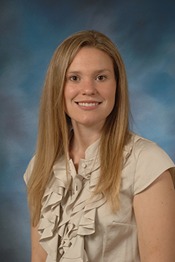Multi-Institutional Study to Demonstrate An Increase in Variability of Delivered Dose to Patients for SRS Treatments as a Result of Dosimetric Leaf Gap Parameter Tuning
A Santoso1, O Blasi2, R Popple3, S Holmes4, K Woods2, Y Vinogradskiy5, A Qureshi6, C Antonakakis7, J Jones6, D Thomas1, L Olsen7*, (1) University of Colorado Anschutz Medical Campus, Aurora, CO, (2) Colorado Associates in Medical Physics, Colorado Springs, CO, (3) University of Alabama Birmingham, Birmingham, AL, (4) Standard Imaging, Inc., Middleton, WI, (5) Thomas Jefferson University, Philadelphia, PA, (6) Poudre Valley Hospital - UCHealth, Fort Collins, CO, (7) Memorial Hospital - UCHealth, Colorado Springs, CO
Presentations
TU-B-202-3 (Tuesday, 7/12/2022) 8:30 AM - 9:30 AM [Eastern Time (GMT-4)]
Room 202
Purpose: Recent studies have indicated the dosimetric leaf gap (DLG) parameter has the greatest impact on dosimetric accuracy. The purpose of this multi-institutional study was to assess impact of DLG parameter tuning on differences between calculated and measured doses in stereotactic radiosurgery (SRS) plans.
Methods: Six institutions using Varian linacs equipped with HD-MLCs and Eclipse planning software participated in this study. The primary institution scanned a Sun Nuclear StereoPhan and generated six clinically representative VMAT SRS plans of varying target size (0.5-2cm), number (1-3), and modulation (3.43–4.32). All plans were calculated with 10 MV flattening filter-free energy using AAA, v. 15.6.05. Plans were distributed to participants and recalculated with an institution-specific beam model, holding both MUs and the phantom’s relative electron density constant. Point dose measurements were performed in the StereoPhan using the Exradin W2 scintillator. Coefficients of variation (COVs) for measured and calculated doses were assessed for all plans. Physical DLGs were measured for each machine and clinical DLGs were collected. An optimal DLG was determined by minimizing the absolute difference between calculated and median measured W2 dose across all plans.
Results: COVs for W2 data were smaller for measured doses (range: 0.56–2.12%) than Eclipse dose calculations (range: 0.86–2.58%). Range of physical (0.037–0.077 cm) and clinical (0.076–0.111 cm) DLGs were reported. Across all plans, the max difference between measured and calculated doses (using clinical DLG values) was 9.1% (range: -1.4-9.1%). An optimal DLG of 0.114 cm was calculated, yielding a reduced maximum difference between measured and calculated doses of -2.7% (range: -2.7–1.6%).
Conclusion: This work demonstrates that institution-specific tuning of the DLG parameter causes a large variability in delivered dose (up to 9.1%) to patients. Standardization of the DLG parameter improves the accuracy of SRS dose calculations across multiple institutions
Keywords
Stereotactic Radiosurgery, Dosimetry, Treatment Verification
Taxonomy
TH- External Beam- Photons: General (most aspects)
Contact Email



